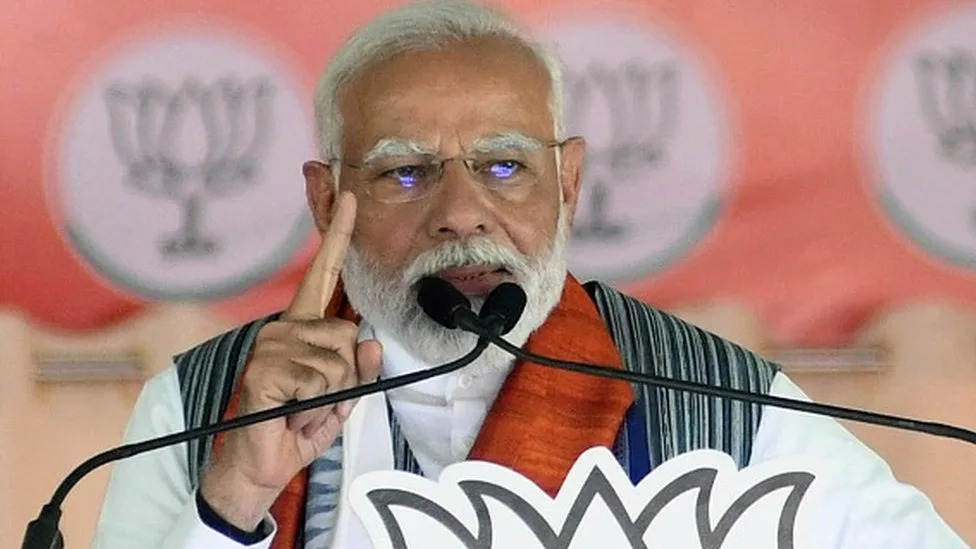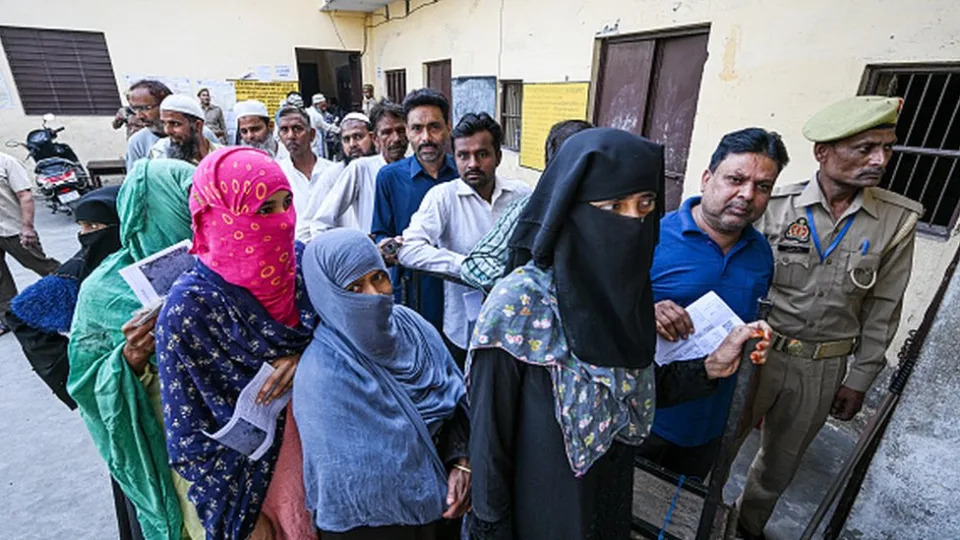Sanjana Karanth
Tue, May 7, 2024
A coalition of press freedom, civil liberties and human rights organizations sent a letter to the White House on Tuesday to call on the Biden administration to make public an upcoming report on whether foreign countries — including Israel — are using U.S. military aid in ways that break international humanitarian laws.
For months, members of Congress have been demanding assurances that Israel, which receives U.S. military aid, has complied with international and U.S. law — which prohibits violence against civilians and efforts to block aid — in its war in Gaza. In response, President Joe Biden in February issued a memo known as NSM-20, which requires federal U.S. agencies to submit a report to Congress on whether countries that get U.S. military aid are in fact obeying the law.
The report’s initial deadline was May 8, though it is currently unclear if it will be ready to submit by Wednesday.
The Biden administration has not said explicitly if it will make the report publicly available.
But the letter’s signatories — including Amnesty International USA, Defending Rights & Dissent, the Freedom of the Press Foundation, the National Press Photographers Association, the Radio Television Digital News Association and Reporters Without Borders — said that the “process established in NSM-20 suggests” that the report to Congress should be unclassified.
“The public and the press have an especially strong interest in understanding how the U.S. has assessed the assurances provided under NSM-20 by all countries that receive U.S. defense articles, and particularly those in areas of armed conflict,” read the letter.
“Your administration has pledged to ‘bring transparency and truth back to the government,’” the letter continued. “We urge you to adhere to this commitment by releasing the … report to Congress under NSM-20 to the press and the public.”
The White House did not immediately respond to HuffPost’s request for comment, while the National Security Council referred the question to the State Department. The State Department did not immediately respond to HuffPost.
The Biden administration is facing growing pressure both domestically and from the international community over its continued diplomatic and military support for Israel’s offensive in Gaza, which has so far killed nearly 35,000 Palestinians since Oct. 7. While Hamas agreed this week to a proposal that would include a cease-fire and the return of hostages, Israel rejected the plan.
As Israel is poised to invade the southernmost Gazan city of Rafah — despite allies like the U.S. warning against it, due to the city’s large civilian population — lawmakers and humanitarians have are increasingly concerned that Prime Minister Benjamin Netanyahu’s government has committed war crimes.
An independent expert analysis endorsed by Sen. Chris Van Hollen (D-Md.) – a lawmaker who pushed for the NSM-20 report — said that Israel’s actions displayed “a clear pattern of violations of international law, failures to apply civilian harm mitigation best practices, and restrictions of humanitarian assistance.”
The Biden administration’s response to the upcoming report could see it step back from its full-throated support for Israel. Or it could further paint the administration as incapable of restraining its Middle Eastern ally, after more than seven months of carnage.
Access to the report “will allow the public to assess the thoroughness and accuracy of the U.S.’s assessment of [a] foreign country’s assurances, particularly in cases where there have been allegations that recipients have used U.S. assistance in a manner that violates international and U.S. law,” the Tuesday letter stated.
“Journalists and the public must have access to the May 8 report if they are to understand how the U.S. government responds to these allegations and determine whether it is adhering to the process and standards set forth in NSM-20.”
Amnesty International, one of the letter’s signatories, published a brief on April 29 in response to NSM-20, accusing Israel of breaking the law. If the Biden administration chooses to make its report public, people can compare it to the claims in Amnesty’s brief, Van Hollen told HuffPost in an interview published Friday.
“The Biden administration and the United States loses credibility when we point to reports by Amnesty or Human Rights Watch where [they] serv[e] our political interests, and sometimes ignores them when they don’t,” the senator told HuffPost. “In order to be credible, you need to be consistent.”
Biden faces key test over Israel’s military actions in Gaza
Laura Kelly
Tue, May 7, 2024

Biden faces key test over Israel’s military actions in Gaza
President Biden is facing a key test this week in delivering a report to Congress on Israel’s conduct in Gaza, which has the potential to cut off U.S. assistance to Israel.
The report is mandated by National Security Memorandum 20 (NSM 20), which Biden issued in February, and is due by May 8. It requires the administration to assess Israeli assurances that it is using U.S. weapons in line with international laws on war and human rights.
If Israel is found to be in violation of these laws, the Biden administration will then have 45 days to recommend next steps.
While there’s little expectation that Biden will impose severe consequences against Israel amid its war against Hamas in the Gaza Strip, the president has shown increasing openness to imposing consequences on Israel in response to mounting evidence of human rights abuses against Palestinians.
These include sanctioning Israeli settlers and their supporters in the West Bank for violence against Palestinians, as well as singling out five Israeli military units operating in the West Bank as having carried out instances of gross human rights violations — although these incidents predate Israel’s war against Hamas in Gaza.
The administration has, so far, held off imposing consequences on the units, citing Israeli engagement on remediation efforts, investigations and accountability.
“We have seen remediation of those violations. And that is, of course, what we expect of partners,” State Department spokesperson Vedant Patel said last week.
This week’s deadline comes as campus protests against U.S. support for Israel have shaped the debate over Gaza in recent weeks. Concerns over how Biden will carry out NSM 20 has prompted its own debate within foreign policy circles.
Some Republicans want the memo revoked, arguing that existing guardrails are sufficient and support for Israel should be the priority. Leading Democrats are calling for more detail on how it will actually be carried out, and questioning Israel’s assurances that it is following the law.
Last week, 88 House Democrats wrote to Biden urging enforcement of NSM 20, including imposing costs on Israel for what they view as Prime Minister Benjamin Netanyahu’s government impeding the delivery of humanitarian assistance to Palestinians in Gaza.
Determining that Israel was hindering delivery of humanitarian assistance would constitute a violation of Section 620I of the Foreign Assistance Act and trigger the U.S. to block security assistance or arms sales.
“It is incumbent upon the Secretary of State or Secretary of Defense to begin the assessment and remediation process outlined in the memorandum and consider the variety of tools available to the administration to address these continued violations, from refreshing the assurances to withholding specific arms transfers,” they wrote.
Biden’s decision to issue the memo came in direct response to pressure from some Senate Democrats to scrutinize more closely Israel’s war conduct in Gaza, but also preserve the president’s flexibility in holding Israel to account.
The language in the memo does not single out Israel; it applies to all foreign recipients of the recently-passed U.S. national security supplemental package, to include Ukraine and Taiwan.
And the president, or any successive president, has the power to revoke the memo and make its directives obsolete. But Republicans have already lashed out at Biden as trying to “placate critics of security assistance to our vital ally Israel.”
“We urge you to revoke NSM-20, abide by the robust and vital human rights safeguards already codified in U.S. security assistance law, and continue to support our critical partners around the world,” Sen. James E. Risch (R-Idaho), and Rep. Michael McCaul (R-Texas), the top Republicans on the foreign affairs panels of their respective chambers, wrote to Biden in April.
Reception of the memo is also controversial among Democrats, concerned that the administration could hide behind vague language and underdeveloped reporting requirements to shield Israel from consequences.
Sen. Chris Van Hollen (D-Md.), joined by 12 colleagues, requested a briefing in March from Biden’s national security team, writing “the NSM does not outline how the administration will determine if a country has violated an assurance and if there is a process in place to track its adherence to them.”
Similar concerns prompted the creation of an independent task force that issued a report last month detailing reports of Israeli violations of international law and humanitarian law.
The authors include two former State Department officials who are critical of U.S. policy toward Israel, and experts on international humanitarian law, civilian harm mitigation, U.S. domestic law and security assistance.
The 76-page report provides scores of incidents that the authors say represent a “a systematic disregard for international humanitarian law and military best practice regarding civilian harm mitigation by the Israel Defense Forces, including with U.S.-provided arms.”
Josh Paul is the co-chair of the task force and the former director of the Office of Congressional and Public Affairs for the Bureau of Political-Military Affairs. He resigned from the State Department in protest in October over what he criticized as the U.S. government’s unchecked weapons deliveries to Israel.
He said the importance of NSM 20 is to put the administration on record of what it knows of Israel’s potential violations of international law and its actions related to the hindering of delivery of humanitarian assistance.
“If they do lay out any credible reports of violations of [international humanitarian law], it would not be surprising to see them provide excuses. But I think they will have to tread very carefully there, as that would have to be something that the administration’s lawyers would need to take a look at,” he said.
The task force report does not prescribe actions for the administration. Biden officials have previously cited Israeli government remediation efforts and investigations into incidents of human rights violations as satisfying efforts at accountability.
Paul said he was not optimistic that the U.S. would hold Israel to account, given its previous statements on the war.
“I’m going to withhold judgment and wait and see what they actually say, in the hope that they do make a good faith effort to follow the directives President Biden laid out in the NSM.”
What is almost certain to remain unchanged is Biden’s resolute support for Israel in standing by its seven-month war against Hamas for the Oct. 7 attacks, when Hamas members killed approximately 1,200 people and taking more than 250 people hostage, with 133 Israelis still held against their will in Gaza.
For Israel’s supporters, any suggestion that Israel violated international law must be taken with the caveat that it is facing a terrorist enemy that uses civilians as shields.
“There have been civilians murdered, but that is not the fault of Israel,” House Speaker Mike Johnson (R-La.) said in an interview with CNN last month.
“It’s the fault of the terrorists — the Hamas operators and soldiers, the terrorists who have used these people and put them into harm’s way. Israel, I’m convinced, is doing its very best to prevent civilian casualties. But this is a war, and they’re fighting for their very existence. And they are not the aggressors. It is the other side.”
But the catastrophic humanitarian crisis facing Palestinians in Gaza has prompted candid criticism from Biden, who has called Israeli bombing “indiscriminate” and “over the top.”
Gaza’s health agency says more than 30,000 people have been killed in the war, the majority women and children; but Israeli officials say that also includes more than 10,000 Hamas fighters. Another 50,000 people have been injured; more than 1 million displaced; and the head of the United Nations food program said Gaza has now entered a “full-blown famine.”
Luis Moreno, who served as deputy chief of mission to Israel from 2007-10, said Biden’s recent actions imposing some consequences on Israel are welcome. But he said there’s a double standard for Israel on application of so-called “Leahy laws,” which require the U.S. to cut off military assistance and cooperation with foreign security forces found to have committed human rights abuses.
“Leahy vetting was not applied to [Israel],” said Moreno, a career foreign service officer who served as U.S. ambassador to Jamaica.
“There’s always been a double standard with the IDF, and it was always understood and no one really questioned it,” he said.
Tom Malinowski, a former Democratic congressman who served as assistant secretary of State for democracy, human rights and labor during the Obama administration, said that double standard will be tested as more evidence emerges from Gaza.
“It’s true that till now the State Department has in practice not applied Leahy to Israel,” he posted on the social platform X. “The real test will come when investigations of the current conflict start. It will be painful, but [in my opinion] it’s always better to confront these issues honestly and consistently.”
Report into whether Israel broke international law in Gaza ‘indefinitely delayed’ by Biden administration
Katie Hawkinson
Tue, May 7, 2024
President Joe Biden’s administration has indefinitely delayed a report investigating potential Israeli war crimes in Gaza, according to a Politico report that cites four sources with insider knowledge.
The development comes after the US State Department was expected to release the report on Wednesday.
If the State Department were to find that Israel violated international humanitarian law, the US may have to stop sending foreign aid. Under the Leahy Law, the US government cannot aid foreign security forces found committing “gross violations of human rights.”

President Joe Biden, pictured speaking on 7 May 2024. A new report reveals his administration has indefinitely halted an investigation into potential Israeli war crimes (AP)
Democratic Senator Peter Welch, an outspoken critic of the Israeli Defense Forces’ (IDF) conduct in Gaza, called on the Biden administration to halt Israeli aid on Tuesday. He argued the US is already in violation of the Leahy Law.
“We write with concern regarding the US government’s failure to apply the Leahy Law consistently to all recipients of US security assistance,” Mr Welch wrote in a letter co-signed by eight other lawmakers.
“Recent articles documented that successive administrations have neglected to implement the Leahy Law in Israel,” he continued.
Last week, dozens of lawmakers also called on the Biden administration to reconsider aid to Israel.
A coalition of 88 Democratic members wrote to the White House on Friday, arguing that Israel’s “restrictions on US-backed humanitarian aid efforts have contributed to an unprecedented humanitarian disaster for Palestinian civilians and to credible reports of famine in parts of Gaza.”
Last month, the White House said future US aid was contingent on Israel announcing “a series of specific, concrete, and measurable steps to address civilian harm, humanitarian suffering, and the safety of aid workers.”
Meanwhile, Israeli forces have taken control of the Palestinian side of the Rafah crossing, which borders Egypt in southern Gaza, the Israeli military confirmed.
The Palestinian health ministry says Israel’s continued assault on Gaza has killed almost 35,000 people, most of whom were women and children. The United Nations also says that restrictions on humanitarian aid have created a “man-made famine,” with half the 2.3 million strong population of the strip at catastrophic levels of hunger.
The attacks on Gaza come after 7 October, when Hamas launched a surprise attack on Israel, killing some 1,200 people and taking another 250 people hostage.
Also this week, Hamas accepted a proposed ceasefire deal over the war in Gaza. Israel, however, has rejected it and talks over a truce are said to be continuing.
The Independent has contacted the National Security Council and the State Department for comment.
UPDATE 2-Biden administration to miss deadline for report on Israeli weapons use, sources say
Patricia Zengerle and Humeyra Pamuk and Jonathan Landay
Updated Tue, May 7, 2024
(Adds Biden's title in paragraph 2, changes wording to Israel in paragraph 7)
By Patricia Zengerle, Humeyra Pamuk and Jonathan Landay
WASHINGTON, May 7 (Reuters) - The Biden administration will miss a Wednesday deadline to report to Congress on whether Israel is violating international humanitarian law in Gaza, four sources said on Tuesday, findings that could fuel concerns over its use of U.S.-supplied weapons against the Palestinian enclave.
A National Security Memorandum, known as NSM-20, that U.S. President Joe Biden issued in February requires the State Department to report to Congress by May 8 on whether it finds credible Israel's assurances that its use of U.S. weapons does not violate U.S. or international law.
Four sources said on Tuesday the administration had informed congressional committees that it would not make the deadline but hoped to present its findings within days. Two congressional aides said they had no indication the delay was tied to political concerns.
Reuters reported last month that some senior U.S. officials do not find Israel's assurances credible. The Reuters report, along with investigations by outside organizations like Amnesty International, has prompted some lawmakers to call on the Biden administration not to tilt the report toward Israel.
"I've had a lot of conversations... with folks in the administration, really urging them to make sure that this report is credible, that it's seen to be based on facts and law and not based on what they would wish it would be," Democratic Senator Chris Van Hollen told reporters.
Washington's provision of military assistance to Prime Minister Benjamin Netanyahu's government has prompted protests across the U.S. demanding that universities and Biden withdraw support for Israel, including sending weaponry.
'NOT CREDIBLE'
In Washington, many of Biden's fellow Democrats have called for a shift in long-standing U.S. policy of providing unconditional military support to Israel.
Israel’s assurances of compliance with U.S. law are "not credible," said Representative Jason Crow, who last week organized a letter to Biden from more than 80 Democratic lawmakers saying there is sufficient evidence that Israel has violated international law and obstructed U.S. aid deliveries to Gaza.
On Tuesday, sources told Reuters that Biden's administration has been holding up certain arms shipments to Israel, in what two of the sources said was an apparent political message to the U.S. ally.
State Department spokesperson Matthew Miller told a news briefing on Tuesday the NSM-20 report was not yet finished but the department was working "very hard" to complete it. "It's possible it slips just a little bit but we're still, at this point, trying to get it done by tomorrow," he said.
The memorandum bars any recipient of U.S. military assistance from restricting the delivery of humanitarian aid.
The report deadline comes amid concern about famine in Gaza and calls from the United States, other governments and international bodies for Israel to refrain from launching a big offensive against Rafah, a city that Israel calls Hamas fighters' last stronghold but is also the refuge of more than 1 million displaced Palestinian civilians. (Reporting by Patricia Zengerle, Humeyra Pamuk, Jonathan Landay and Simon Lewis; Editing by Alistair Bell, Deepa Babington and Lisa Shumaker)
US lawmakers await Biden administration report on Israeli weapons use
By Patricia Zengerle, Humeyra Pamuk and Simon Lewis
WASHINGTON, May 7 (Reuters) - President Joe Biden's administration is to report to U.S. lawmakers as soon as Wednesday on whether Israel is violating international humanitarian law or obstructing aid deliveries in Gaza, findings that could fuel concerns over its use of U.S.-supplied weapons against the Palestinian enclave.
A National Security Memorandum, known as NSM-20, Biden issued in February requires the State Department to report to Congress by May 8 on whether it finds credible Israel's assurances that its use of U.S. weapons does not violate U.S. or international law.
Three sources said on Tuesday the administration had informed congressional committees that it would not make the deadline, but hoped to present its findings within days. Two congressional aides said they had no indication the delay was tied to political concerns.
Reuters reported last month that some senior U.S. officials do not find Israel's assurances credible. The Reuters report, along with investigations by outside organizations like Amnesty International, has prompted some lawmakers to call on the Biden administration not to tilt the report toward Israel.
"I've had a lot of conversations... with folks in the administration, really urging them to make sure that this report is credible, that it's seen to be based on facts and law and not based on what they would wish it would be," Democratic Senator Chris Van Hollen told reporters.
Washington's provision of military assistance to Prime Minister Benjamin Netanyahu's government has prompted protests across the U.S. demanding that universities and Biden withdraw support for Israel, including sending weaponry.
In Washington, many of Biden's fellow Democrats have called for a shift in long-standing U.S. policy of providing unconditional military support to the Jewish state.
On Tuesday, sources told Reuters that Biden's administration has been holding up certain arms shipments to Israel, in what two of the sources said was an apparent political message to the U.S. ally.
State Department spokesperson Matthew Miller told a news briefing on Tuesday the NSM-20 report was not yet finished but the department was working "very hard" to complete it. "It's possible it slips just a little bit but we're still, at this point, trying to get it done by tomorrow," he said.
The memorandum bars any recipient of U.S. military assistance from restricting the delivery of humanitarian aid.
The report deadline comes amid concern about famine in Gaza and calls from the United States, other governments and international bodies for Israel to hold off from a big offensive against Rafah, a city in Gaza Israel calls Hamas fighters' last stronghold but is also the refuge of more than one million displaced Palestinian civilians. (Reporting by Patricia Zengerle, Humeyra Pamuk and Simon Lewis Editing by Alistair Bell)







